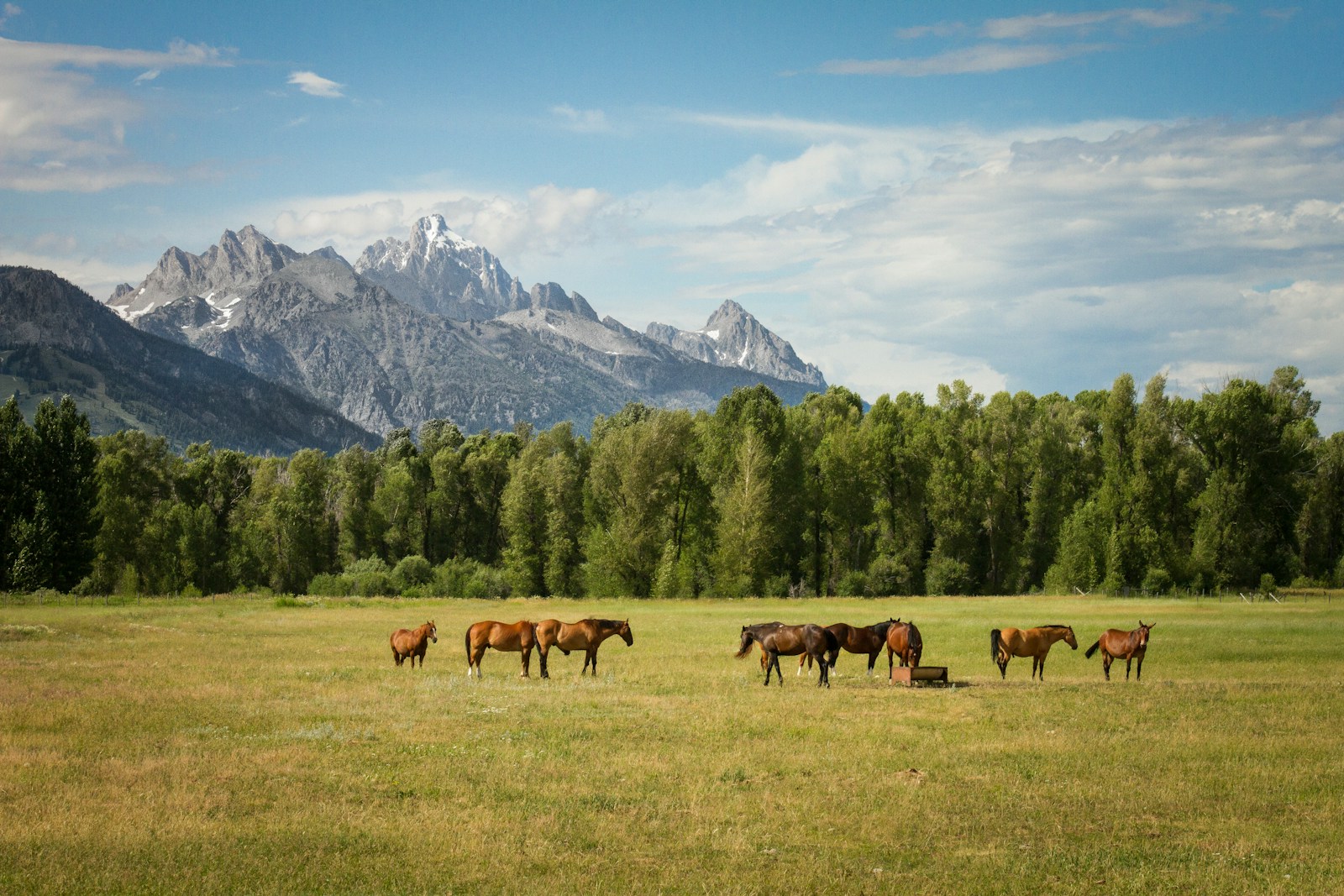In a world where urban landscapes dominate and technology constantly demands our attention, there exists a profound escape—camping alongside wild horses. This extraordinary experience combines the serenity of outdoor camping with the majestic sight of free-roaming equines. Across North America and parts of Europe, various locations offer this unique opportunity to observe these magnificent creatures in their natural habitats while enjoying the simplicity of tent life. From the rugged mountains of the American West to the windswept barrier islands of the Atlantic coast, these destinations represent some of the last places where humans can witness the untamed spirit of horses living as nature intended. This article explores the most remarkable locations where adventure seekers can camp in proximity to wild horse herds, providing essential information about each destination’s unique characteristics, regulations, and the best ways to respect these incredible animals while enjoying their presence.
Assateague Island National Seashore, Maryland/Virginia
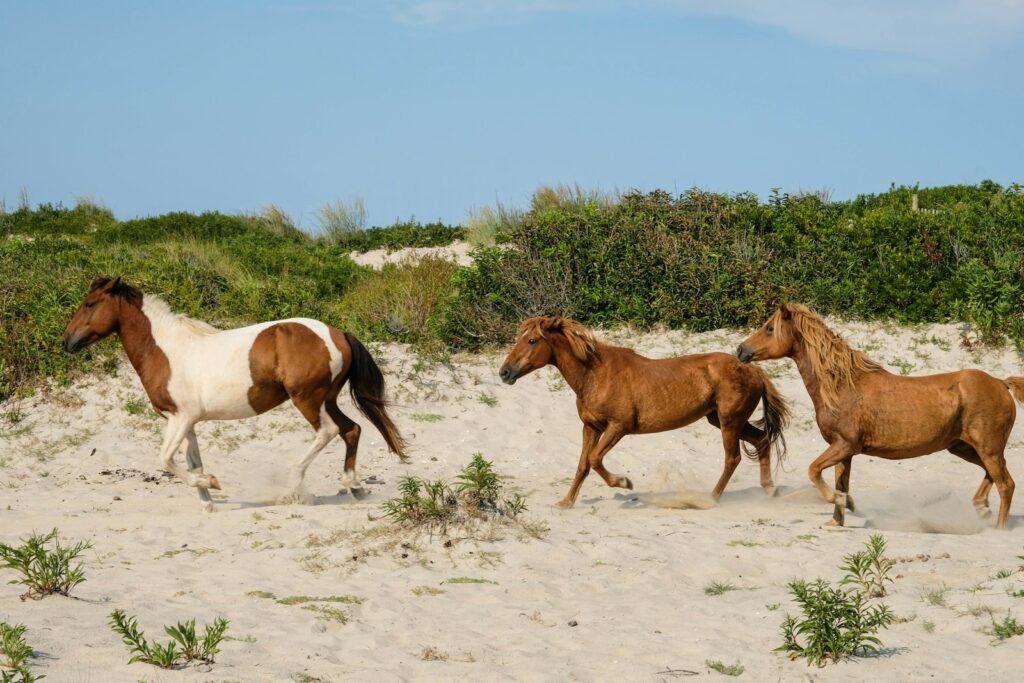
Perhaps the most famous wild horse camping destination in the United States, Assateague Island National Seashore spans the Maryland-Virginia border and hosts approximately 300 feral horses believed to be descendants of domestic horses that survived a shipwreck centuries ago. The Maryland side offers year-round camping with oceanside and bayside sites where horses frequently roam through camp looking for food and fresh water. Visitors wake to the surreal experience of horses grazing just yards from their tents, against a backdrop of pristine beaches and rolling dunes. The park enforces strict regulations requiring campers to store food in vehicle trunks or special food storage lockers, as the horses have become adept at opening coolers and tents in search of human food, which can be harmful to their health.
Chincoteague National Wildlife Refuge, Virginia
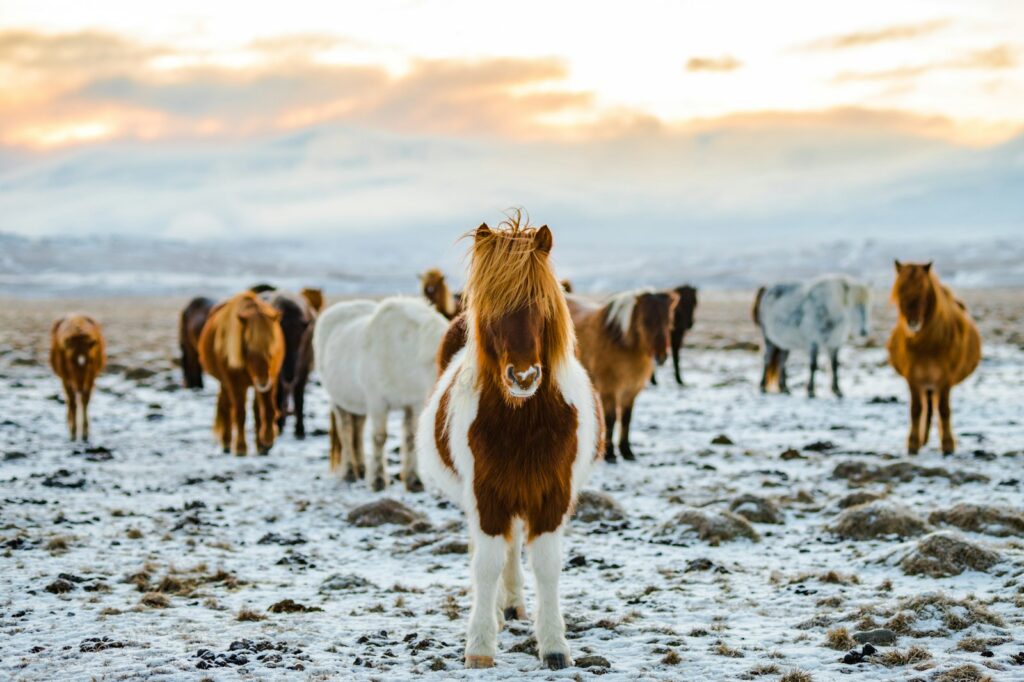
Adjacent to Assateague but on the Virginia side, Chincoteague National Wildlife Refuge is home to the famous Chincoteague ponies, managed by the local volunteer fire department. Unlike the Maryland side, these horses are technically on Assateague Island but are contained within large fenced areas, giving them significant room to roam while preventing interaction with campers. Visitors can camp at nearby private campgrounds and take day trips into the refuge where they can spot horses from designated viewing areas. The annual Pony Swim, made famous by Marguerite Henry’s book “Misty of Chincoteague,” draws thousands of visitors each July when some of the foals are auctioned to maintain the herd’s size and health.
Theodore Roosevelt National Park, North Dakota
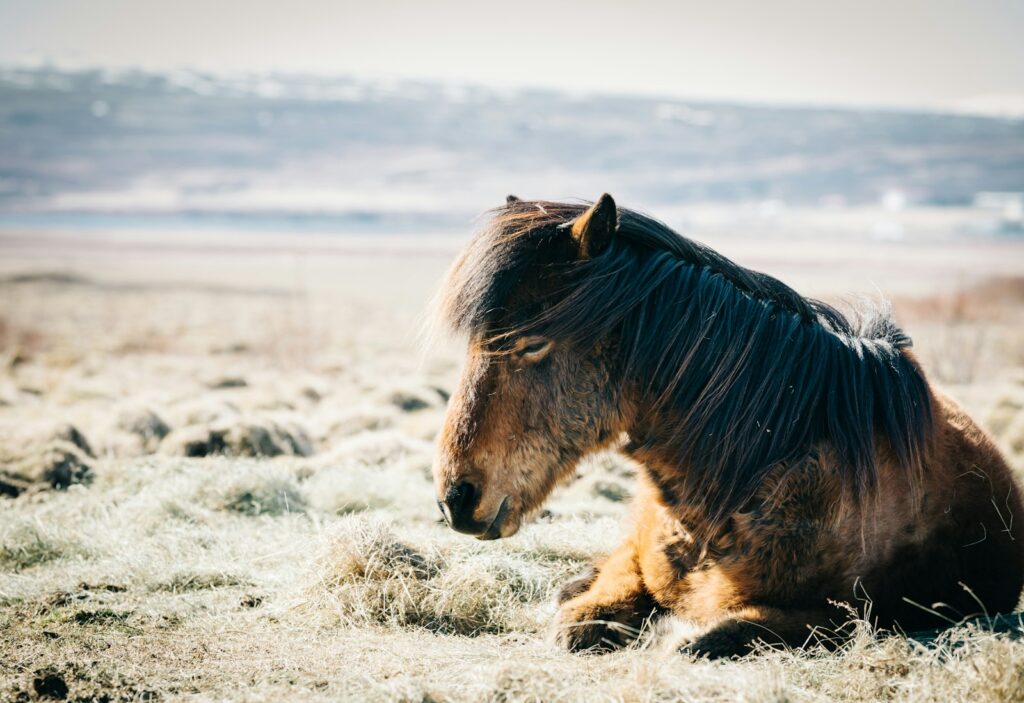
The rugged Badlands of North Dakota provide a dramatically different backdrop for wild horse viewing at Theodore Roosevelt National Park. The park’s approximately 150 feral horses roam freely across the park’s South Unit, where they’ve adapted to the challenging climate and terrain. Camping is available at the Cottonwood Campground within the park, though horses may not directly visit the campground as frequently as at Assateague. Early morning drives along the park’s scenic loop offer the best opportunities for spotting bands of horses against the stunning landscape of painted canyons and prairie. The horses here display diverse coloration and markings, as they descend from ranch stock that escaped or was released during the early 20th century when the land was designated for conservation.
Pryor Mountains Wild Horse Range, Montana/Wyoming
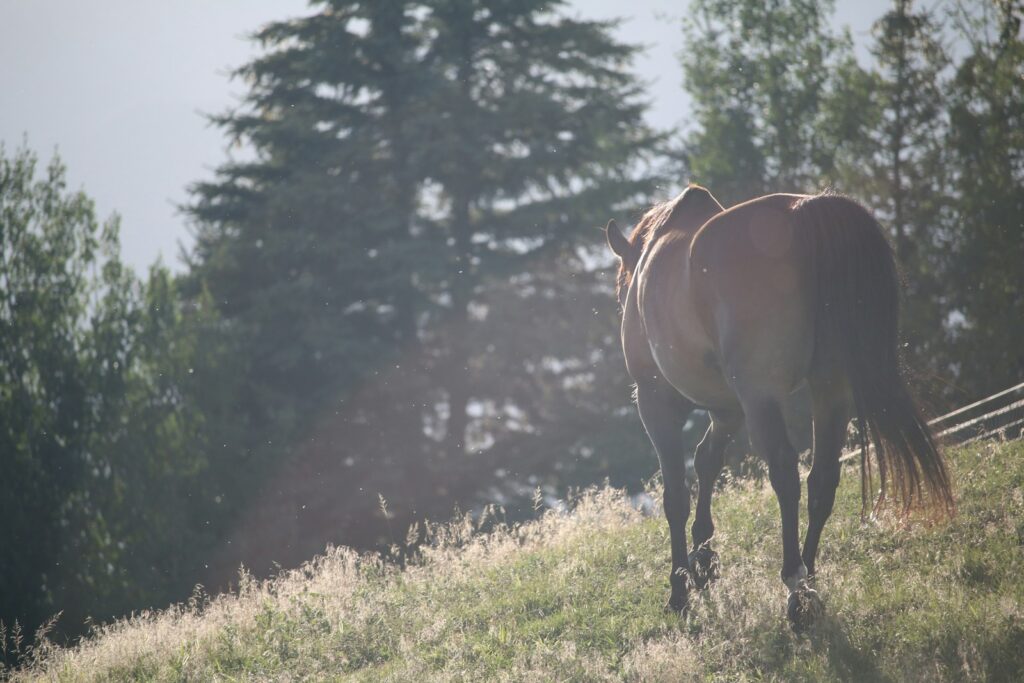
Straddling the Montana-Wyoming border, the Pryor Mountains Wild Horse Range is home to horses with documented Spanish lineage dating back to the 1600s, making them among the most genetically pure Spanish colonial horses in America. While there’s no developed campground within the range itself, the adjacent Bighorn Canyon National Recreation Area offers camping at Horseshoe Bend with stunning views over Bighorn Lake. Visitors can access the horse range via rugged roads requiring high-clearance 4-wheel-drive vehicles, where they might spot the distinctively marked horses living among limestone cliffs and juniper forests. The Pryor Mountain horses are particularly significant to conservationists because genetic testing has confirmed their rare Spanish colonial heritage, with some displaying primitive markings like dorsal stripes and zebra-patterned legs.
Sand Wash Basin, Colorado
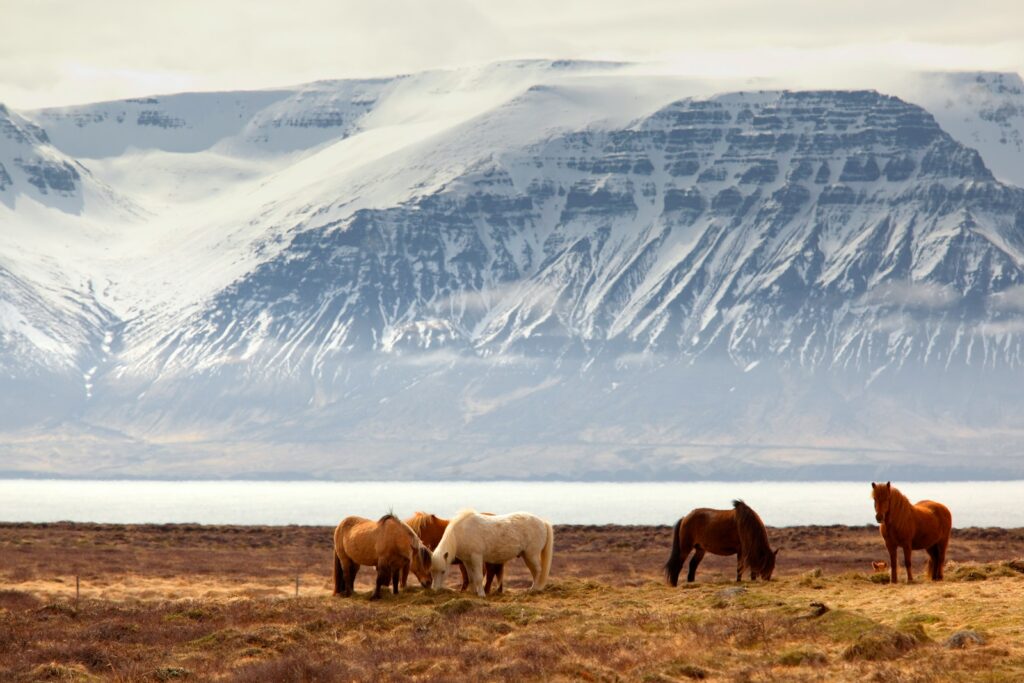
The expansive Sand Wash Basin in northwestern Colorado is home to one of the largest and most accessible wild horse herds in the West, with approximately 750 horses roaming across 157,000 acres of public land. Dispersed camping is permitted throughout much of this Bureau of Land Management (BLM) territory, allowing visitors to set up camp wherever they find a suitable spot, often with horses visible in the distance. The horses here are known for their striking variety of colors, including many pintos and palominos, which photographers find particularly captivating against the backdrop of sage-covered hills. Unlike more regulated national parks, Sand Wash Basin offers a more rugged, self-sufficient camping experience where visitors must bring everything they need, including water, as there are no facilities in this remote area.
New Forest National Park, England
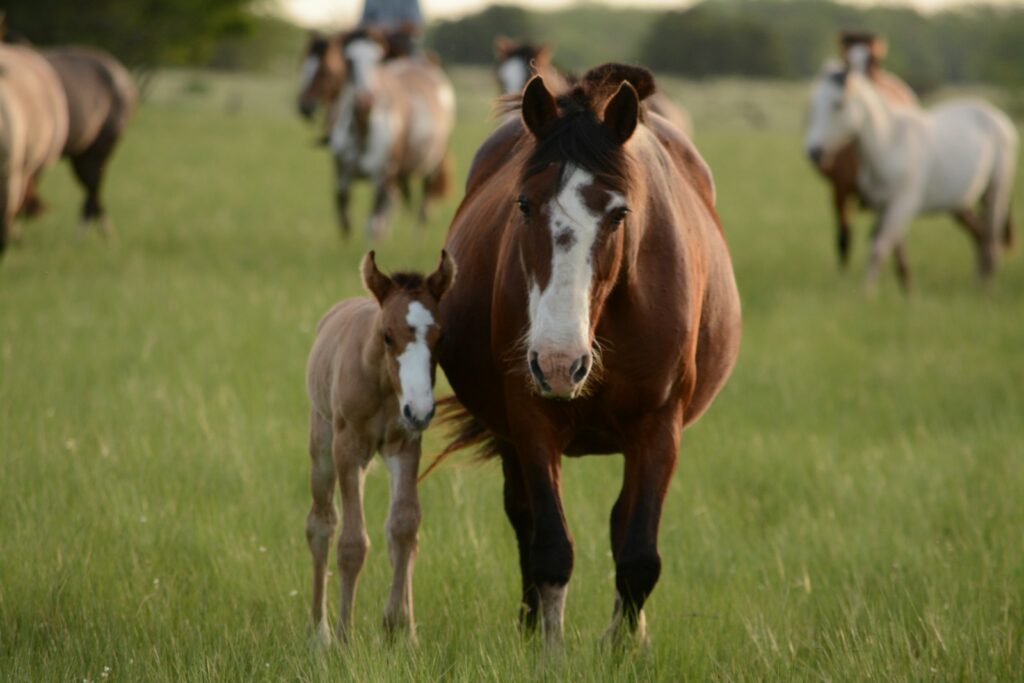
Crossing the Atlantic, the New Forest National Park in southern England offers a European perspective on camping among free-roaming horses. The semi-wild New Forest ponies aren’t technically “wild” but are owned by local people with grazing rights, yet they live essentially free across the ancient royal hunting grounds. Ten managed campsites operate throughout the forest, including the Hollands Wood campground where ponies regularly wander between tents. Beyond horses, campers might encounter the New Forest’s other free-roaming livestock including cattle, donkeys, and indigenous pigs released during “pannage season” to eat fallen acorns that would be toxic to horses and cattle. The New Forest represents one of Europe’s oldest functional common-grazing systems, dating back to William the Conqueror’s establishment of the area as a royal hunting preserve in 1079.
Cumberland Island National Seashore, Georgia
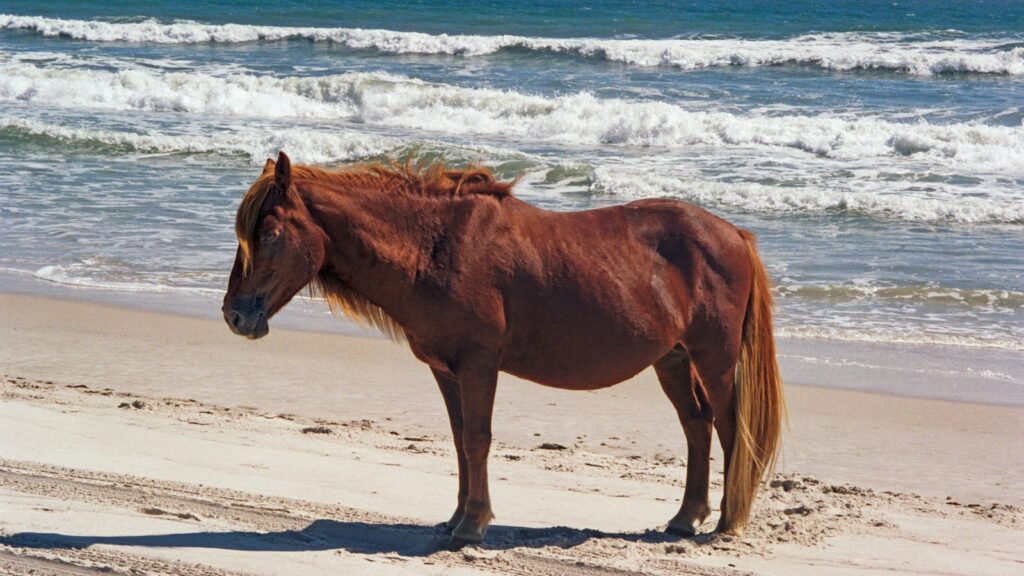
Georgia’s largest barrier island hosts around 150 feral horses roaming freely among maritime forests, pristine beaches, and historic ruins. Cumberland Island National Seashore permits camping at five designated campgrounds accessible only by ferry, creating an exclusive experience where visitors might find themselves alone on beaches with bands of wild horses. The island’s complex ecosystem includes saltwater marshes, maritime forests, and dunes, providing diverse habitats that support the horses throughout the seasons. The origin of Cumberland’s horses remains somewhat debated, though most historians believe they descend from domestic stock introduced by English settlers in the 18th century, with subsequent releases by plantation owners adding to the genetic mix.
Tonto National Forest, Arizona
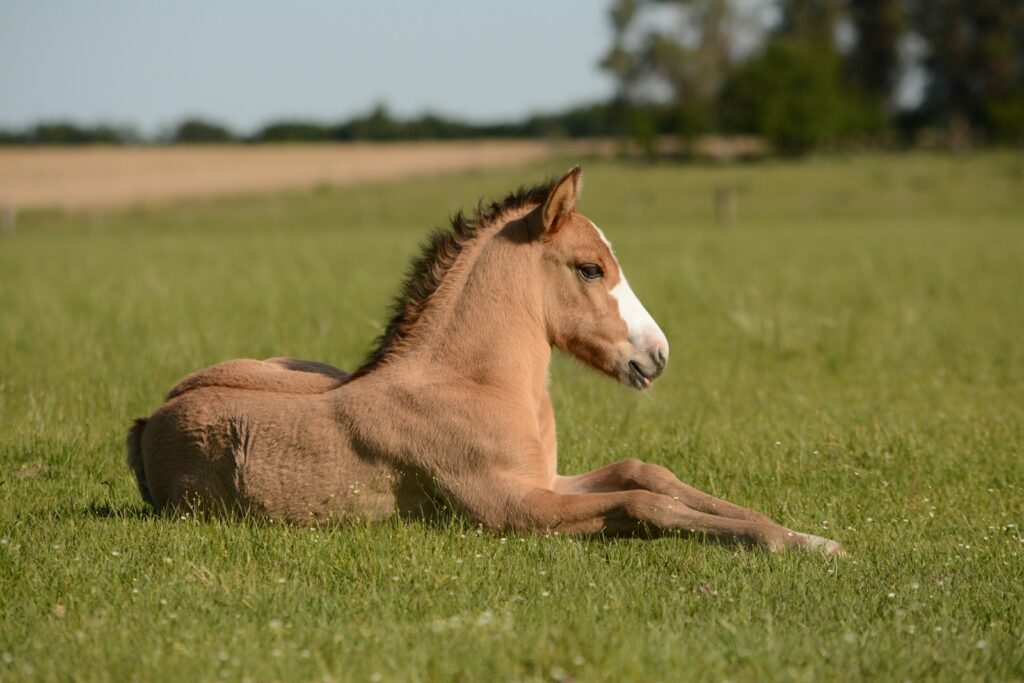
The Salt River Wild Horses have become iconic residents of the Tonto National Forest near Phoenix, where approximately 500 horses live along the Salt River and its tributaries. Multiple campgrounds within the forest provide opportunities to camp near these horses, with Coon Bluff Recreation Area being a particularly reliable location for horse sightings. These horses gained national attention when they faced potential removal in 2015, prompting legislative action that now officially protects them as part of Arizona’s heritage. Unlike many wild horses that avoid water, the Salt River horses are frequently seen standing in the river to cool off during Arizona’s intense summer heat, creating spectacular photographic opportunities as they splash and play in the water.
Shackleford Banks, North Carolina
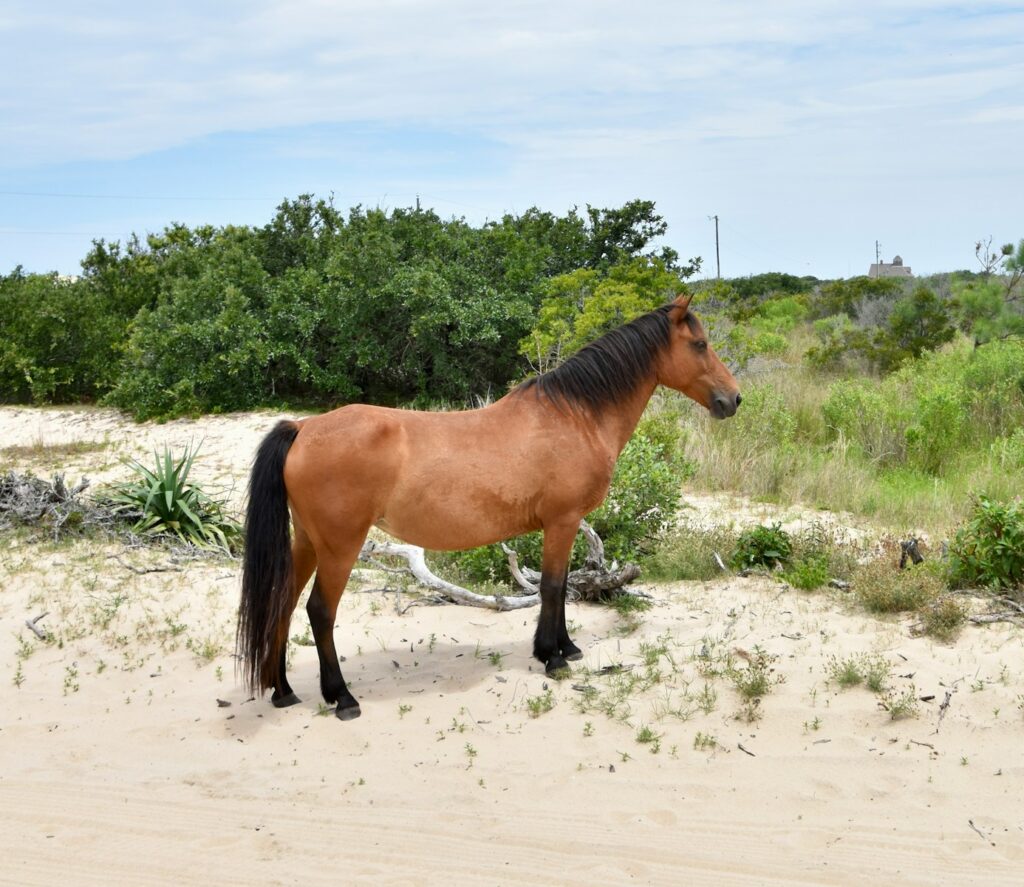
Part of Cape Lookout National Seashore, Shackleford Banks is a barrier island home to about 100 wild horses believed to be descendants of Spanish mustangs that swam ashore from shipwrecked vessels in the 16th century. Primitive camping is permitted throughout the island, which is accessible only by private boat or ferry service. Genetic testing has confirmed the horses’ Spanish ancestry, making them historically significant as representatives of some of America’s earliest equine inhabitants. The small island setting means campers often have intimate viewing experiences as horses traverse the narrow landmass between sound and ocean, sometimes passing within yards of camp areas while moving between grazing territories.
Sable Island National Park Reserve, Nova Scotia, Canada
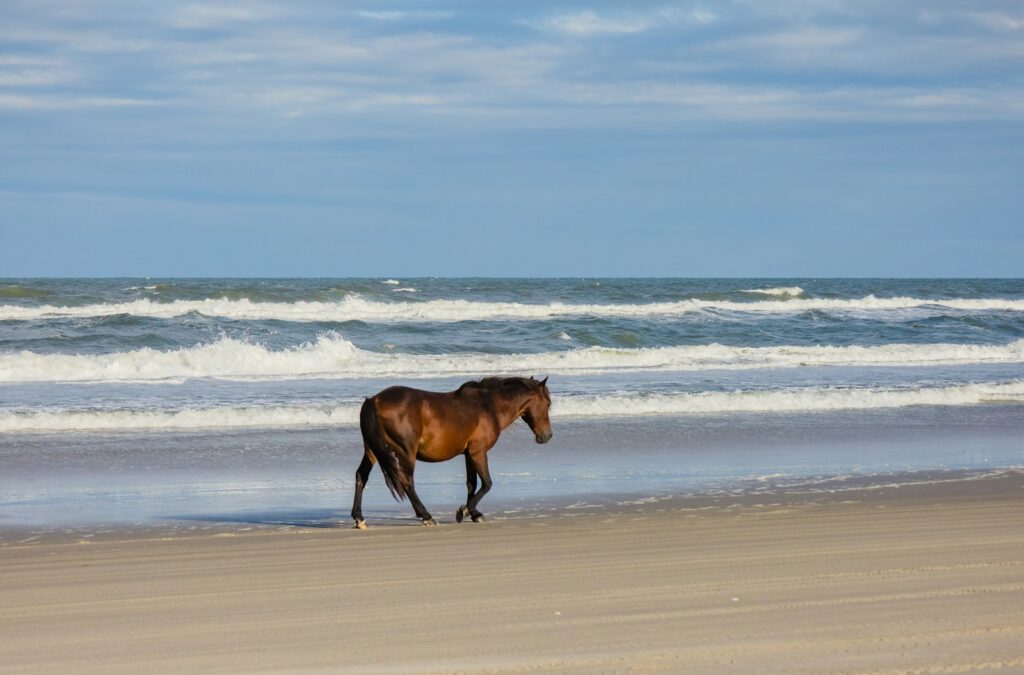
For the truly adventurous, Sable Island—a remote crescent of sand 100 miles off the coast of Nova Scotia—offers the chance to visit one of the most isolated wild horse populations in the world. Camping is limited and requires special permits, making this an exclusive experience for dedicated wildlife enthusiasts. The island’s approximately 500 horses have survived on this harsh, windswept landscape for over 250 years, developing distinctive adaptations including dense winter coats and strategies for finding freshwater in a challenging environment. While difficult to access, requiring chartered flights or boat transportation that can only land in favorable weather, the island rewards visitors with unparalleled wildlife viewing of not just horses but also one of the world’s largest gray seal breeding colonies and numerous rare bird species.
Onaqui Mountain Herd Management Area, Utah
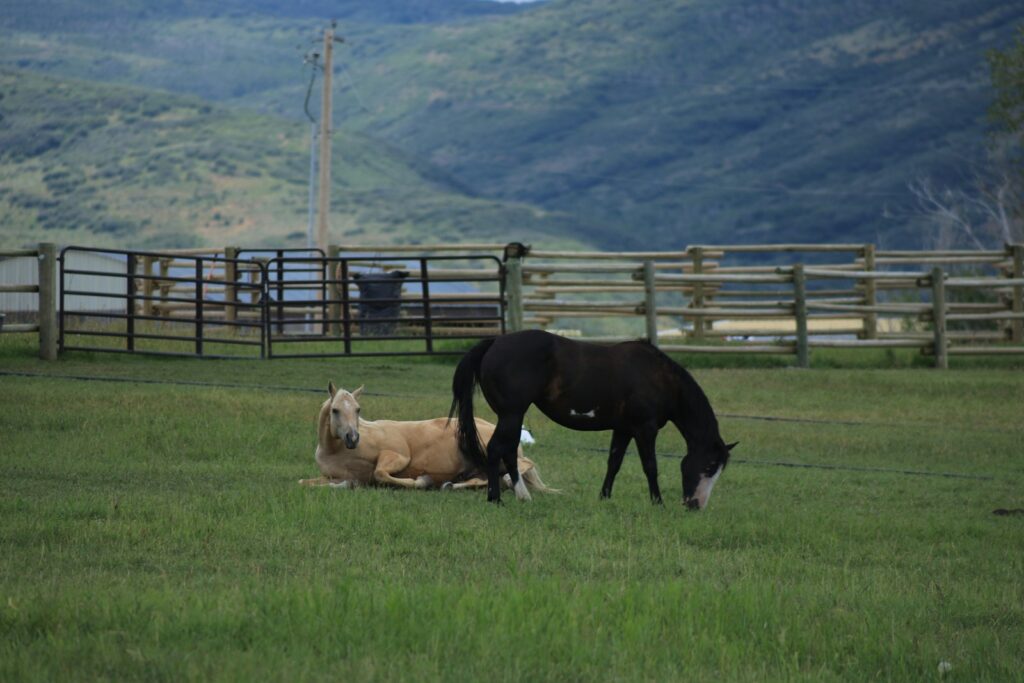
Located just two hours from Salt Lake City, the Onaqui Mountain Herd Management Area provides one of the most accessible wild horse viewing experiences in the western United States. The BLM manages approximately 450 horses here, many of which have become relatively habituated to respectful human observation. Dispersed camping is permitted throughout much of this public land, allowing visitors to set up camp with sweeping views of the sagebrush flats where horses frequently graze. The Onaqui horses have become social media celebrities due to their accessibility and the distinctive personalities of certain herd members that have been documented by photographers over many years. The area’s proximity to urban centers makes it ideal for weekend camping trips, though visitors should be prepared for primitive conditions with no facilities available.
Garub Viewing Point, Namibia
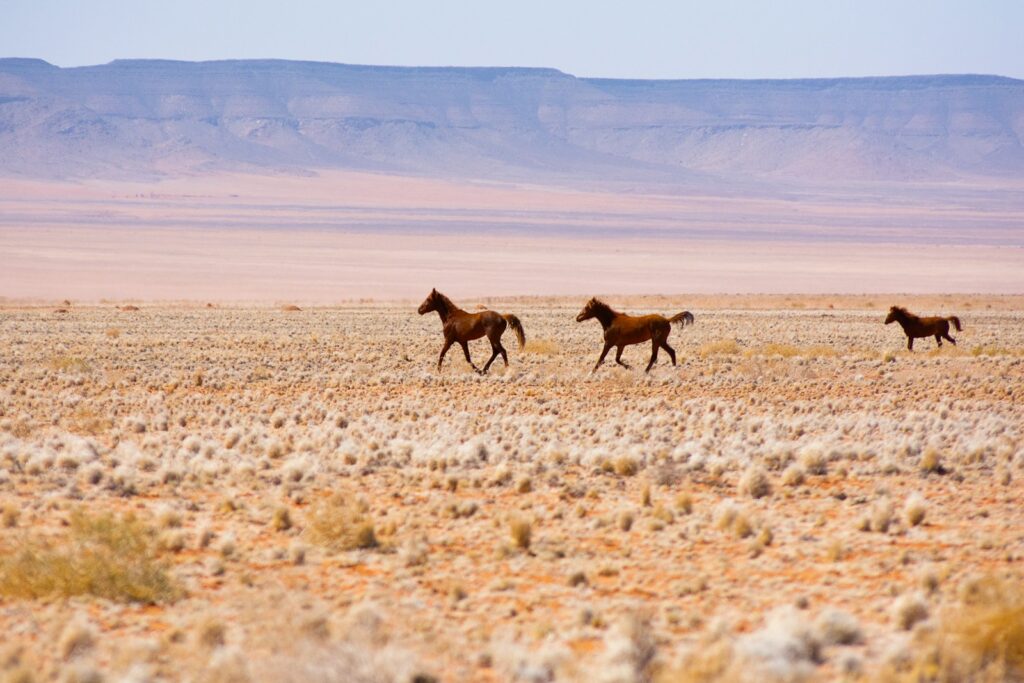
For international travelers seeking a truly unique wild horse camping experience, the desert-adapted horses of Namibia offer an extraordinary opportunity. Near the Garub viewing point in southwestern Namibia, basic camping is permitted, allowing visitors to observe horses that have adapted to one of the harshest environments on Earth. These horses likely descended from German military and domestic stock abandoned during World War I, and have developed remarkable adaptations to survive in a desert receiving less than 4 inches of rainfall annually. Unlike North American wild horses, these animals can go up to three days without water and have learned to dig wells with their hooves to access subterranean moisture. The stark Namib Desert landscape provides a dramatic contrast to the more verdant settings of American wild horse territories, with the golden horses standing out against red sand dunes and sparse vegetation.
Responsible Wild Horse Camping Ethics
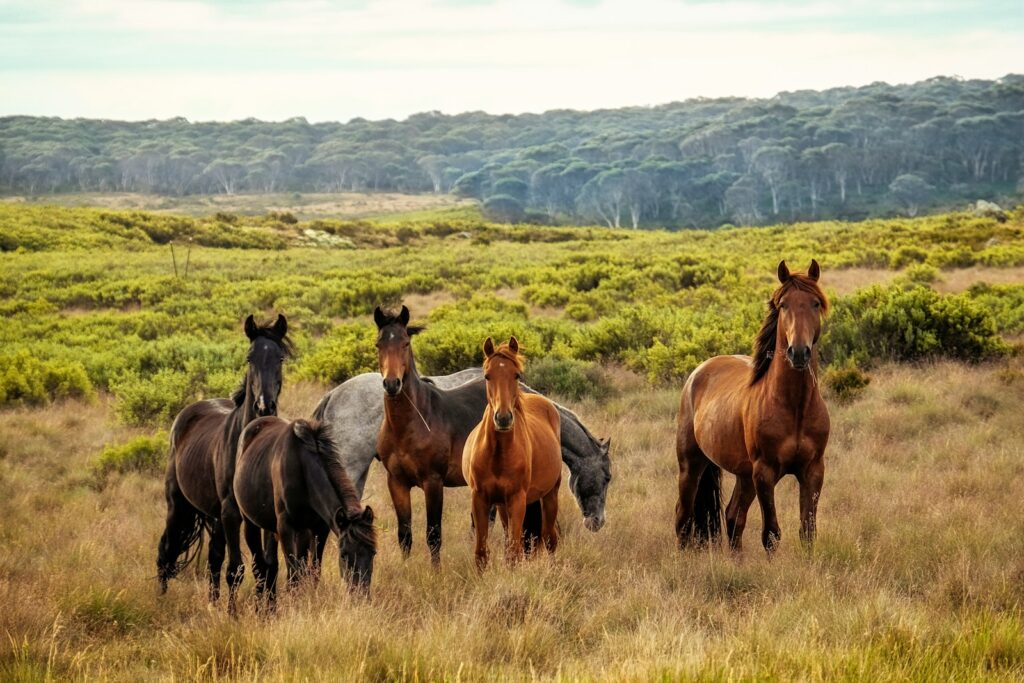
When camping near wild horses, following proper ethics becomes essential not only for visitor safety but for the horses’ wellbeing and continued freedom. Always maintain a minimum distance of 50 feet (though 100 feet is better) from any wild horse, using binoculars or telephoto lenses for closer observation rather than approaching the animals. Never feed wild horses—human food can cause serious digestive issues, and feeding encourages dangerous habituation that often leads to horses being removed from the wild. Properly secure all food, garbage, and scented items in animal-proof containers, as wild horses have powerful senses of smell and remarkable dexterity with their lips that allows them to open many standard containers. Remember that despite their majestic appearance, these are powerful wild animals weighing up to 1,000 pounds that can cause serious injury if they feel threatened or are seeking food.
Wild horses represent one of North America’s most compelling wildlife conservation stories—symbols of freedom and the untamed spirit of the West that continue to capture our imagination. Camping among these magnificent creatures offers a rare opportunity to disconnect from modern life and connect with both nature and history in a profound way. From the mist-shrouded barrier islands of the Atlantic to the sun-baked deserts of the Southwest, each wild horse territory provides its own unique experience and ecological narrative. As pressures on public lands increase and horse management remains controversial, these camping opportunities become even more precious—windows into an era when horses ran free across the continent. By approaching these experiences with respect, preparation, and a commitment to leave no trace, campers can help ensure that future generations will also have the opportunity to wake to the sound of hoofbeats and witness the timeless beauty of horses living as nature intended.

